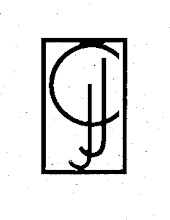The downtown library here houses a bookstore in its basement where it sells donated and decommissioned books and periodicals. All proceeds support the library.
Earlier this year, I was killing time there and parked myself in front of the small section devoted to animals (with the exception of horses, for in the Bluegrass, horses are a category unto themselves). The more I browsed, the more I wanted those books.
Abandoning all self-control, I broke my rule about buying new books, though I rationalized it by noting the purchase was actually a donation to a good cause and the content would help me with the animal welfare projects I was working on. Plus, I limited myself to only the books priced under $3. Even so, I came home with a stack of reading for which I had no space.
An Unspoken Art: Profiles of Veterinary Life by Lee Gutkind was one of those books. Gutkind is the founding editor of Creative Nonfiction magazine and has penned a number of similar books profiling members of the medical community. I’m not sure who the intended audience is, but An Unspoken Art seems appropriate for teenagers who are considering a veterinary career, for clients who want a sense of the veterinarian life and perspective, and, of course, for anyone working or living with a veterinarian.
An Unspoken Art is an easy, straightforward read giving its audience a glimpse into the behind-the-scenes practices of large-animal veterinarians and their assistants, as well as a look at the more typical cat-dog practices. Readers meet…
The vet who had to perform surgery on a pregnant mare at night, in a field, under pouring rain, with only truck headlights to guide her hand.
The vet whose affluent clients fly him to wherever they are in the world to administer whatever their pets need.
The veterinarian who treats penguins at a zoo for bumblefoot, a condition only captive penguins suffer from due to the materials used in their exhibit construction.
Though you’re aware of the writer as he describes the people and animals he’s profiling, Gutkind doesn’t insert himself into the book until the final chapter. And this is where it all went wrong for me.
Gutkind writes about his beloved dog and the heartbreaking decisions he had to make for the German Shepherd. It’s not clear when this episode of Gutkind’s life occurred, but probably well before his book’s publication date of 1997. The author made some bad choices—both for the Shepherd and for himself. Yet this was more a matter of timing than anything else. Had the Shepherd been alive post-1996, when The Dog Who Loved Too Much (another book I took home from the library basement) was published, Gutkind could have read this revelatory explanation of dog behavior and the nuances of aggressive tendencies. Had Gutkind visited the author of The Dog Who Loved Too Much, animal behaviorist Dr. Nicholas Dodman, he might have been able to keep his Shepherd by changing the dog’s diet, exercise regimen, and training.
I guess this hits on another weakness of the book you have to keep in mind while reading it: Vet care has significantly progressed since the book was published, and animal behavior research has expanded. Naturally, this makes some of the decisions and remarks cited in An Unspoken Art seem uninformed when, in fact, they’re just dated.
I don’t regret reading the book. It fed me historical tidbits I didn’t know and anecdotes that may prove useful in the future. But it’s not the only book I’d choose to read to understand a vet’s life in 2012. Plenty of memoirs have been published since 1997 that better reflect current trends and research in veterinary medicine.
Gutkind experienced a transformation while researching An Unspoken Art, which he believed was going to be just one more of his books about medicine. Instead, he discovered that veterinarians (unlike humans’ doctors) serve both their patients and their clients in manifold ways: “Veterinarians practice medicine and treat sick animals, but more than that and in a variety of crucial ways, veterinarians help people live more well-rounded, three-dimensional lives with animals as a primary balancing or anchoring factor.”
This is the crucial message of An Unspoken Art, a message that makes it worthwhile reading for anyone who may need to rely on the knowledge and experience of a veterinarian.
[Top illustration by C. Coles Phillips; other illustrations by Hugh Lofting for his Doctor Dolittle series.]
Subscribe to:
Post Comments (Atom)






No comments:
Post a Comment